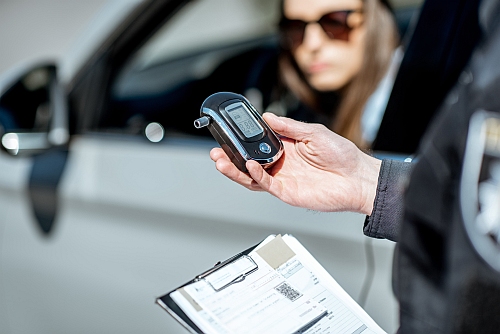- June 12, 2023
Drunk driving is a serious issue plaguing our roads for decades. Emma’s Law, named after a six-year-old girl who tragically lost her life in a DUI accident, was introduced to make South Carolina’s streets safer. One of the key provisions of this law is the requirement for ignition interlock devices (IIDs) for certain DUI/DWI offenders. But what exactly are IIDs?
How do they work? And most importantly, how effective are they in reducing drunk driving incidents? In this article, we’ll explore all these questions and more as we delve into the role of ignition interlock devices in Emma’s Law and their impact on preventing drunk driving incidents. So buckle up, and let’s get started!
What are Ignition Interlock Devices?
Ignition Interlock Devices (IIDs) are mechanisms installed in vehicles to prevent intoxicated drivers from driving. They work by requiring the driver to blow into a breathalyzer before starting the car. If the device detects alcohol above a certain level, usually 0.02% BAC, it will prevent the vehicle from starting.
Certified professionals typically install IIDs which involves attaching the device to the vehicle’s ignition system. After installation, regular maintenance checks are necessary to ensure proper functioning and accuracy.
One benefit of IIDs is that they have been shown to reduce drunk driving incidents when used properly. They can also be an alternative option for DUI/DWI offenders instead of losing their license entirely. Furthermore, IIDs can provide peace of mind for loved ones who may worry about an individual’s continued drinking habits or potential harm caused by impaired driving.
Emma’s Law and Ignition Interlock Devices
Emma’s Law, also known as South Carolina’s Senate Bill 137 or S137, was named after six-year-old Emma Longstreet, who died in a car accident caused by a drunk driver. The law requires all DUI/DWI offenders with blood alcohol content (BAC) levels of .15 or higher to install an ignition interlock device (IID) in their vehicles.
The purpose of the IID requirement is to prevent repeat offenses and protect the public from intoxicated drivers. IIDs work by requiring the driver to blow into a breathalyzer before starting the vehicle. If the device detects any amount of alcohol on the driver’s breath, it will prevent the engine from starting.
Studies have shown that IIDs reduce recidivism rates among DUI/DWI offenders. These devices provide constant monitoring and accountability for those convicted of driving under the influence.
However, there are consequences for not installing an IID as Emma’s Law requires. Offenders may face penalties such as fines, license suspension/revocation, and even jail time if caught driving without an IID when one is required.
Emma’s Law recognizes the seriousness of drunk driving and seeks to hold offenders accountable while protecting innocent lives on South Carolina roads.
The Effectiveness of Ignition Interlock Devices in Reducing Drunk Driving
Ignition interlock devices (IIDs) are highly effective in reducing drunk driving. Studies have found that IIDs can reduce the number of repeat DUI offenses by up to 70%. This is because IIDs require a driver to blow into a breathalyzer before starting their vehicle, and if alcohol is detected above a certain limit, the car will not start.
The impact of IIDs on recidivism rates cannot be overstated. When offenders know they are being monitored, they are less likely to drink and drive again. In addition, studies have found that when an IID is installed, there is a decrease in crashes involving injuries or fatalities.
One of the benefits of IIDs as a preventative measure is that they treat drunk driving as a public health issue rather than solely punishing offenders. By requiring drivers convicted of DUI/DWI to use an IID, we are preventing them from causing harm to themselves or others.
It’s important to note that while IIDs are effective tools for preventing drunk driving incidents among first-time offenders and those with lower BAC levels at arrest, they may not be as effective for high-risk repeat offenders with severe alcohol dependency issues. However, overall, it has proven helpful in reducing impaired driving incidents.
How Ignition Interlock Devices are Changing the Way We Prevent Drunk Driving
Ignition Interlock Devices (IIDs) are becoming increasingly popular in the fight against drunk driving. They offer a way to prevent DUI/DWI offenders from getting behind the wheel while under alcohol, reducing the risk of accidents and fatalities on our roads.
The evolution of IIDs has made them smaller, more reliable, and easier to install. As a result, they have become more affordable and accessible to those who need them most. This accessibility has played a significant role in their increasing popularity as an effective means of preventing drunk driving.
In addition to providing immediate protection for other road users, IIDs also serve as a deterrent for future drunk driving by repeat offenders. Studies have shown that drivers with IIDs installed are less likely to re-offend than those without them.
While there is no silver bullet solution for preventing drunk driving, ignition interlock devices play an important role in addressing this critical issue. Their potential impact on reducing incidents of DUI/DWI cannot be overstated.
As technology continues to improve and laws evolve around their use, it’s clear that ignition interlock devices will remain an important tool in our efforts towards safer roads. The future looks bright for IID technology and its ability to protect everyone on our roads from senseless tragedies caused by impaired drivers.
What Are the Consequences for Removing or Tampering With an Ignition Interlock Device?
Removing or tampering with an Ignition Interlock Device (IID) is a serious offense that can result in severe consequences. If you are caught removing or tampering with an IID, you could face criminal charges and revoke your driving privileges.
In most states, removing or tampering with an IID is considered a misdemeanor. This means that if you are caught, you could face fines, jail time, and probation. Additionally, the removal of an IID may also result in extended license suspensions or revocations.
It’s important to understand that IIDs are not just there to punish offenders but also to protect them from themselves. Removing the device defeats its primary purpose of preventing drunk driving and puts the offender and others on the road at risk for accidents.
Moreover, tampering with IIDs is illegal because it poses threats to public safety and undermines efforts to reduce DUI/DWI-related fatalities and injuries on our roads.
If someone has been accused of removing or tampering with their IID device unfairly by law enforcement officers, rather than deliberately committing this act, they should immediately contact a skilled attorney who understands DUI defense strategies.
Contact an Experienced Charleston Criminal Defense Attorney for the Help You Need!
If you or a loved one has been charged with DUI/DWI in South Carolina, it is important to understand the requirements and consequences of Emma’s Law, including installing an ignition interlock device. While IIDs may seem inconvenient, they have proven effective in reducing drunk driving incidents and making our roads safer.
Preventing drunk driving is everyone’s responsibility. However, if you face legal trouble due to a DUI/DWI charge, don’t hesitate to seek help from an experienced Charleston criminal defense attorney. They can guide and support you throughout your case and protect your rights.
Remember: Contact an experienced Charleston criminal defense attorney for the help you need! Call us today at (843) 277-8711.







